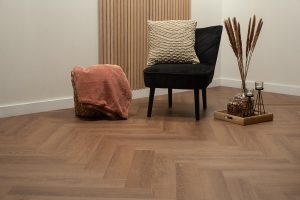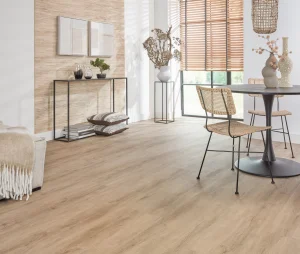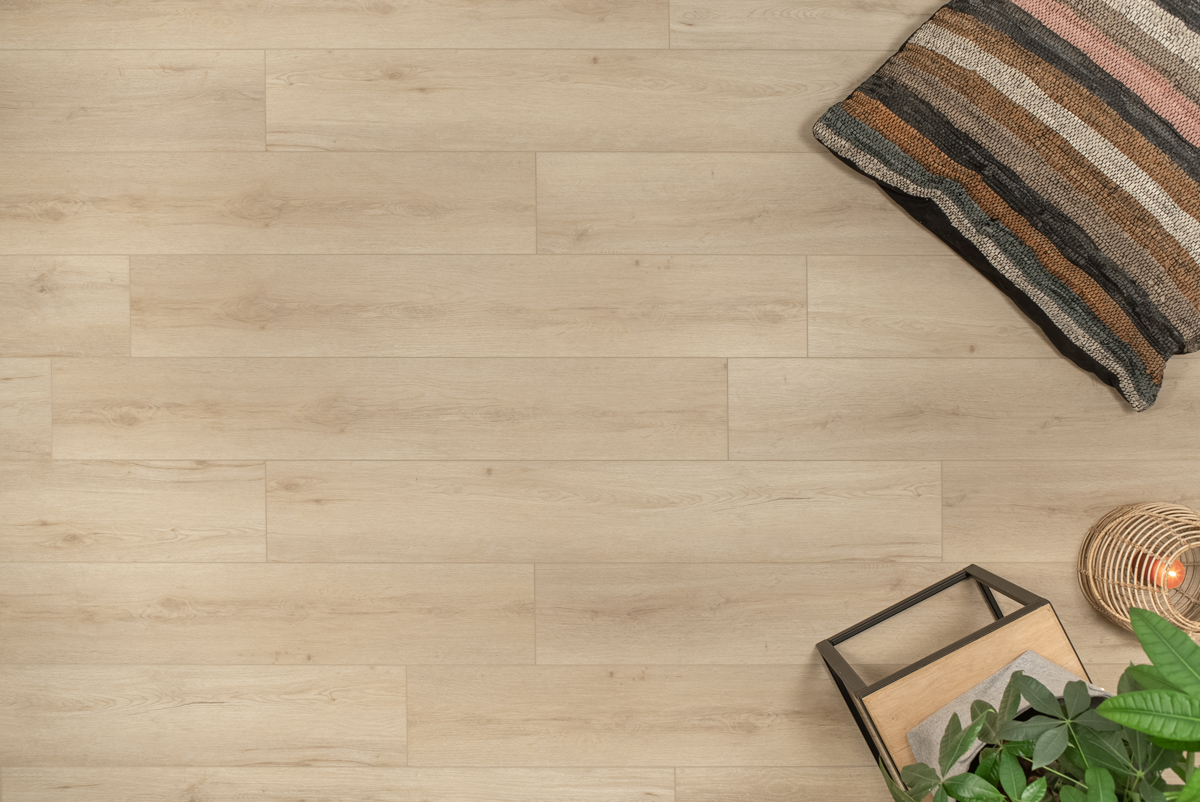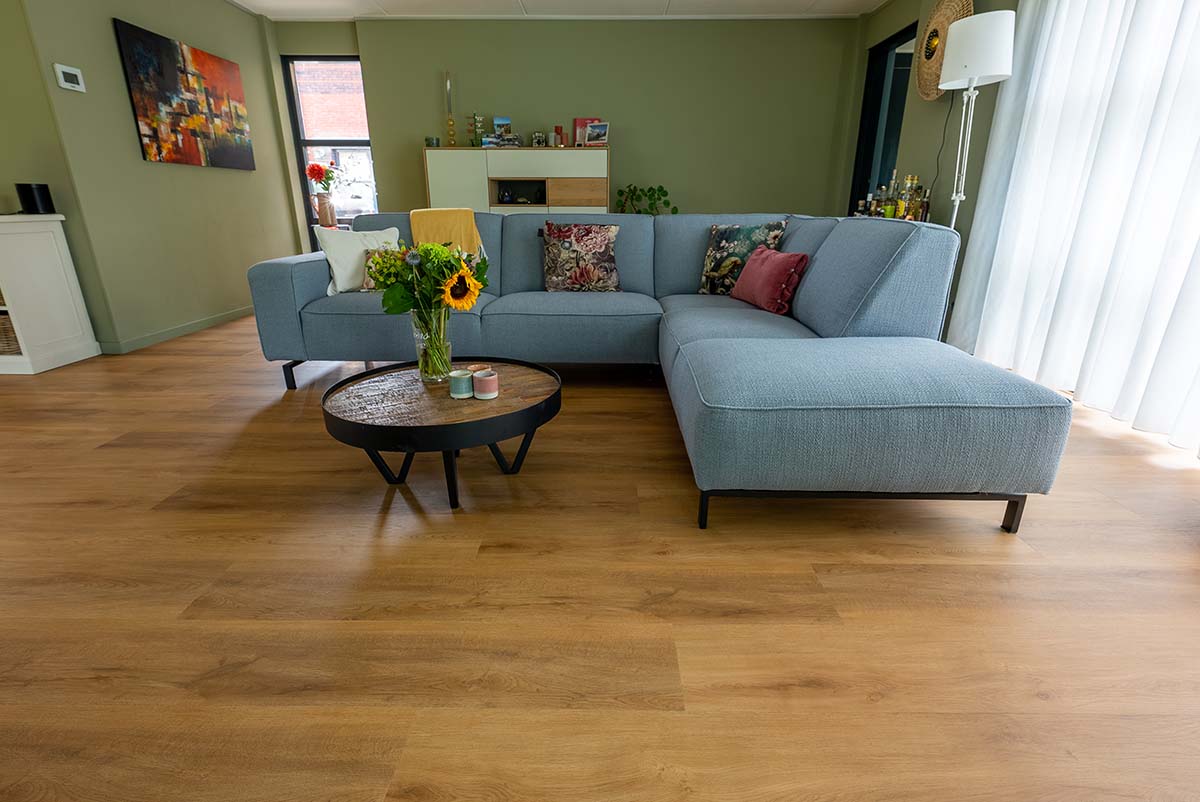Vinyl floor has become increasingly popular in recent years due to its durability, water resistance, and easy installation. They are available in various styles and finishes, making them an attractive option for homeowners and business owners alike. However, scratch sensitivity of vinyl floor is a concern to some people.
In this blog, we take a closer look at the scratch sensitivity of vinyl flooring and discuss ways to reduce it.

The structure of Vinyl Floor
First, it’s important to understand what a vinyl floor is made of. The “carpet pad” of a bonded vinyl floor is a flexible layer that serves as a stable backing for the vinyl floor. On top of the carpet pad is a “film layer.” You may be wondering, what’s a film layer? It’s a thin layer that provides the natural design and colour of the floor. On top of the film layer is a scratch-resistant “wear layer,” which protects the film layer from heavy use. But that’s not all; vinyl floors also have a “PU top layer.” This top layer provides extra protection to the floor and gives it a matte finish. So if you notice light scratches on your Herringbone Vinyl floor, it’s likely not the design itself that’s been damaged, but rather the protective layer of the floor.
Scratch sensitivity
It’s important to understand that vinyl flooring, like all other types of flooring, is exposed to wear and damage. Because of this, user marks and scratches cannot be avoided. However, it is possible to minimise the probability of scratches. One of the main factors contributing to the scratch sensitivity of vinyl floor is the type of finish used. For instance, high-gloss finishes are more prone to scratches compared to matte finishes. Our Whalebone Vinyl floors feature an extremely matte finish, which significantly decreases the chances of getting scratches.

Reducing Scratches on Your Vinyl Floor
Another important factor to consider is the use of furniture on the floor. Heavy furniture can easily scratch the floor, so it’s advisable to use felts or casters when moving furniture to prevent scratches. Whenever possible, try to lift furniture instead of dragging it. While it may require a bit more energy, it will ultimately reduce the chance of scratching your beautiful floor even more. 😉
Did you know?
A small pebble or speck of sand left on your shoes can cause damage to your floor. The rough texture can result in unnecessary wear and scratches on the surface. However, with the use of a good shoe-cleaning mat, you can prevent this problem altogether!
The quality of the vinyl floor is another factor that contributes to susceptibility to scratches. Cheaper floors typically have a thinner top layer, making them more prone to scratching. For this reason, it is recommended to invest in a high-quality vinyl floor with a thick top layer. For example, all of our bonded Vinyl Floors feature a top layer as thick as 0.55 mm!
Maintenance and cleaning Vinyl floor
Another way to reduce scratches is to maintain and clean the floor regularly. Dirt and dust can cause small scratches when they are pushed onto the floor. Regular vacuuming and mopping can prevent this and ensure that your wide vinyl floor continues to look like new.
Finally, it is important to consider where the vinyl floor will be installed. A floor in a busy area such as the hallway is likely to show more scratches and wear than a floor in a less busy area. It is therefore advisable to choose a floor with a higher wear resistance for busier areas.

Removing scratches
In short, vinyl floors are a durable and attractive option for both the home and office. While scratch sensitivity can be a concern, there are several ways to reduce it. By choosing a high-quality vinyl floor with a thick top layer, carrying out regular maintenance and moving furniture carefully. Do you still want to remove scratches on the vinyl floor? This can be done in a number of ways, but as they say, prevention is better than cure!






